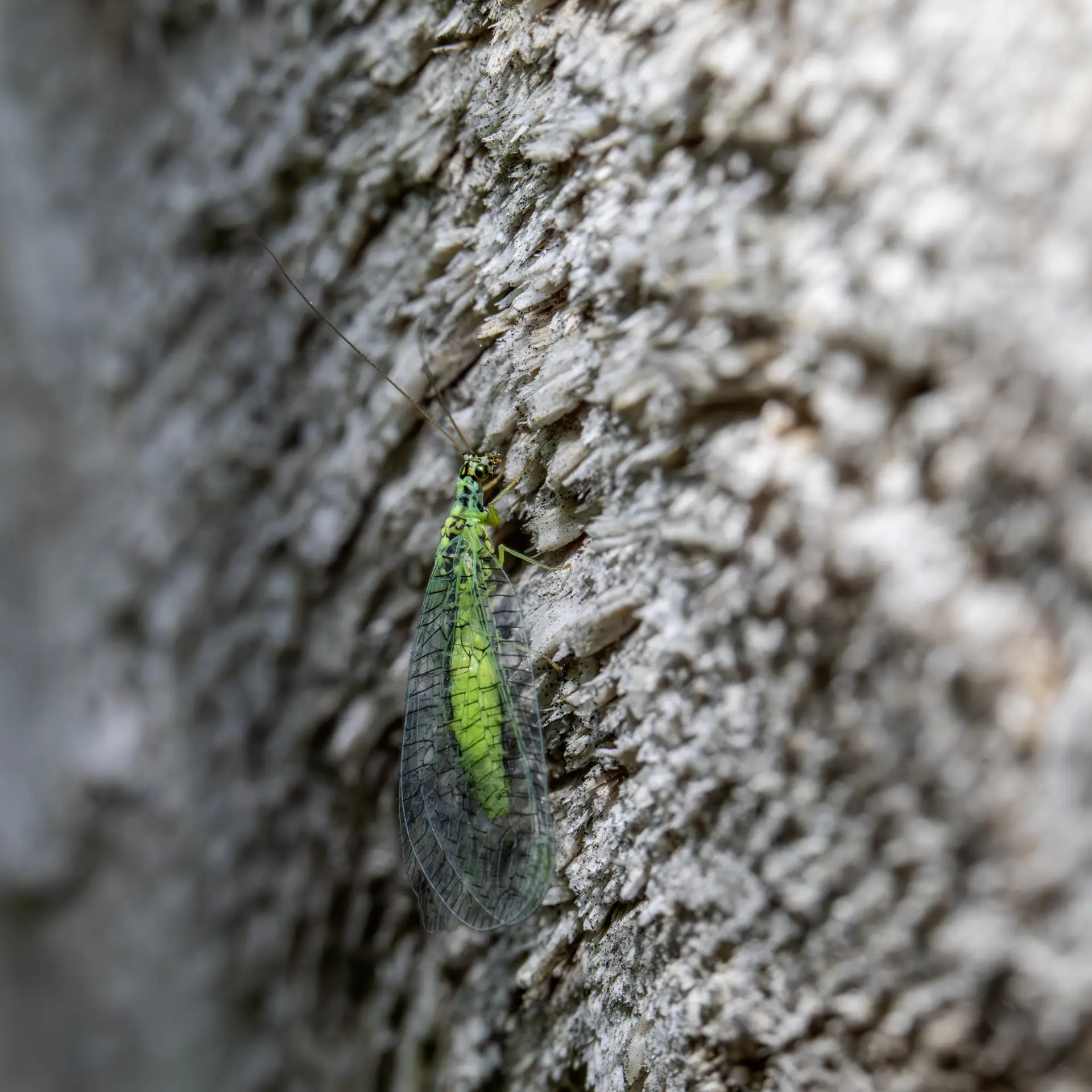The green lacewing is a fascinating insect belonging to the family Chrysopidae, known for its delicate appearance and beneficial predatory behavior. Here are some key features and characteristics of the green lacewing:
- Appearance: Green lacewings have a distinctive appearance characterized by delicate, transparent wings with intricate venation, giving them a lace-like appearance. They are typically bright green in color, although some species may exhibit variations in coloration, ranging from yellowish-green to brownish-green. Their bodies are slender and elongated, with long antennae.
- Lifecycle: Green lacewings undergo complete metamorphosis, meaning they have four life stages: egg, larva, pupa, and adult. Female lacewings lay their eggs on plant leaves or stems, often attaching them to slender stalks to protect them from predators. The larvae hatch from the eggs and are active predators, feeding voraciously on small insects and their eggs, such as aphids, thrips, mites, and caterpillars. After several weeks of feeding, the larvae pupate and eventually emerge as adult lacewings.
- Predatory Behavior: Both the larvae and adult stages of green lacewings are predatory, feeding on a variety of small insects and other arthropods. The larvae are particularly voracious predators and are often used in biological pest control programs to manage pest populations in agricultural and horticultural crops. They use their long, sickle-shaped mandibles to pierce and suck the body fluids from their prey.
- Habitat and Distribution: Green lacewings are found in various habitats worldwide, including forests, grasslands, gardens, and agricultural landscapes. They are often attracted to flowering plants and may be found near sources of nectar and pollen. Some species are more common in specific regions or climates, while others have broader distributions.
- Feeding Habits: Adult green lacewings primarily feed on nectar, pollen, and honeydew produced by aphids and other sap-feeding insects. They play a role in pollination as they visit flowers in search of food. In addition to their predatory role in controlling pest populations, green lacewings also contribute to ecosystem functioning as pollinators.
- Defense Mechanisms: Green lacewings have various defense mechanisms to protect themselves from predators. Their green coloration serves as camouflage, helping them blend in with foliage and avoid detection. Additionally, they may exhibit behavioral responses such as playing dead or dropping from plants when threatened, allowing them to escape potential predators.
Overall, green lacewings are fascinating insects with important ecological roles as both predators and pollinators. Their predatory behavior makes them valuable allies in biological pest control, contributing to sustainable agriculture and integrated pest management practices.
Visited 793 times, 1 visit(s) today
Views: 1192
Subscribe to the newsletter:
